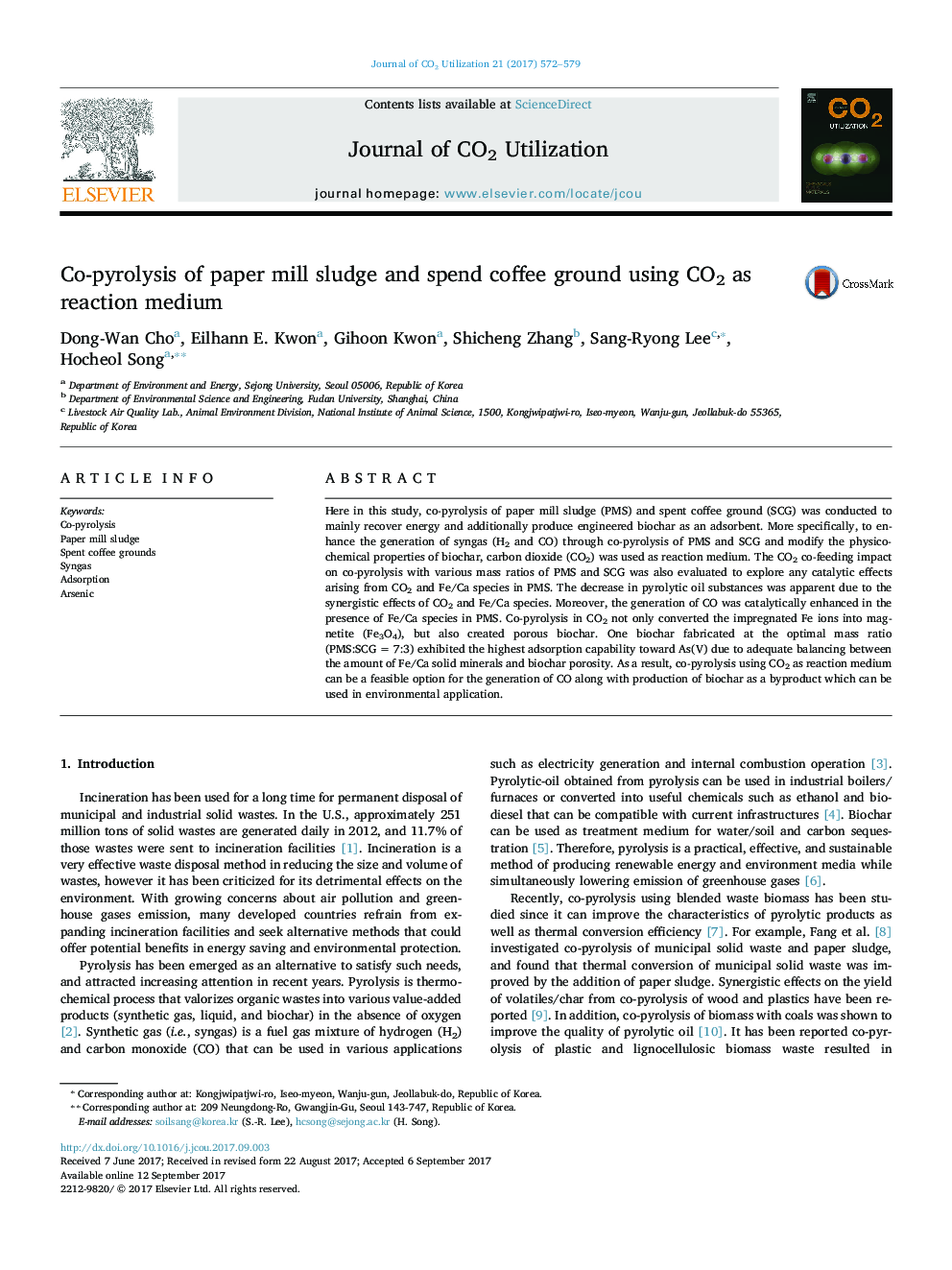| Article ID | Journal | Published Year | Pages | File Type |
|---|---|---|---|---|
| 6456164 | Journal of CO2 Utilization | 2017 | 8 Pages |
â¢Co-pyrolysis of paper mill sludge and spent coffee ground in CO2 atmosphere.â¢Presence of Fe/Ca species in biochar generated from co-pyrolysis.â¢Catalytic activity of Fe/Ca species shifting condensable hydrocarbons to syngas.â¢Higher porosity of co-pyrolyzed biochar compared to a single waste-derived biochar.â¢Good As(V) adsorption capability of co-pyrolyzed biochar.
Here in this study, co-pyrolysis of paper mill sludge (PMS) and spent coffee ground (SCG) was conducted to mainly recover energy and additionally produce engineered biochar as an adsorbent. More specifically, to enhance the generation of syngas (H2 and CO) through co-pyrolysis of PMS and SCG and modify the physico-chemical properties of biochar, carbon dioxide (CO2) was used as reaction medium. The CO2 co-feeding impact on co-pyrolysis with various mass ratios of PMS and SCG was also evaluated to explore any catalytic effects arising from CO2 and Fe/Ca species in PMS. The decrease in pyrolytic oil substances was apparent due to the synergistic effects of CO2 and Fe/Ca species. Moreover, the generation of CO was catalytically enhanced in the presence of Fe/Ca species in PMS. Co-pyrolysis in CO2 not only converted the impregnated Fe ions into magnetite (Fe3O4), but also created porous biochar. One biochar fabricated at the optimal mass ratio (PMS:SCGÂ =Â 7:3) exhibited the highest adsorption capability toward As(V) due to adequate balancing between the amount of Fe/Ca solid minerals and biochar porosity. As a result, co-pyrolysis using CO2 as reaction medium can be a feasible option for the generation of CO along with production of biochar as a byproduct which can be used in environmental application.
Graphical abstractDownload high-res image (136KB)Download full-size image
